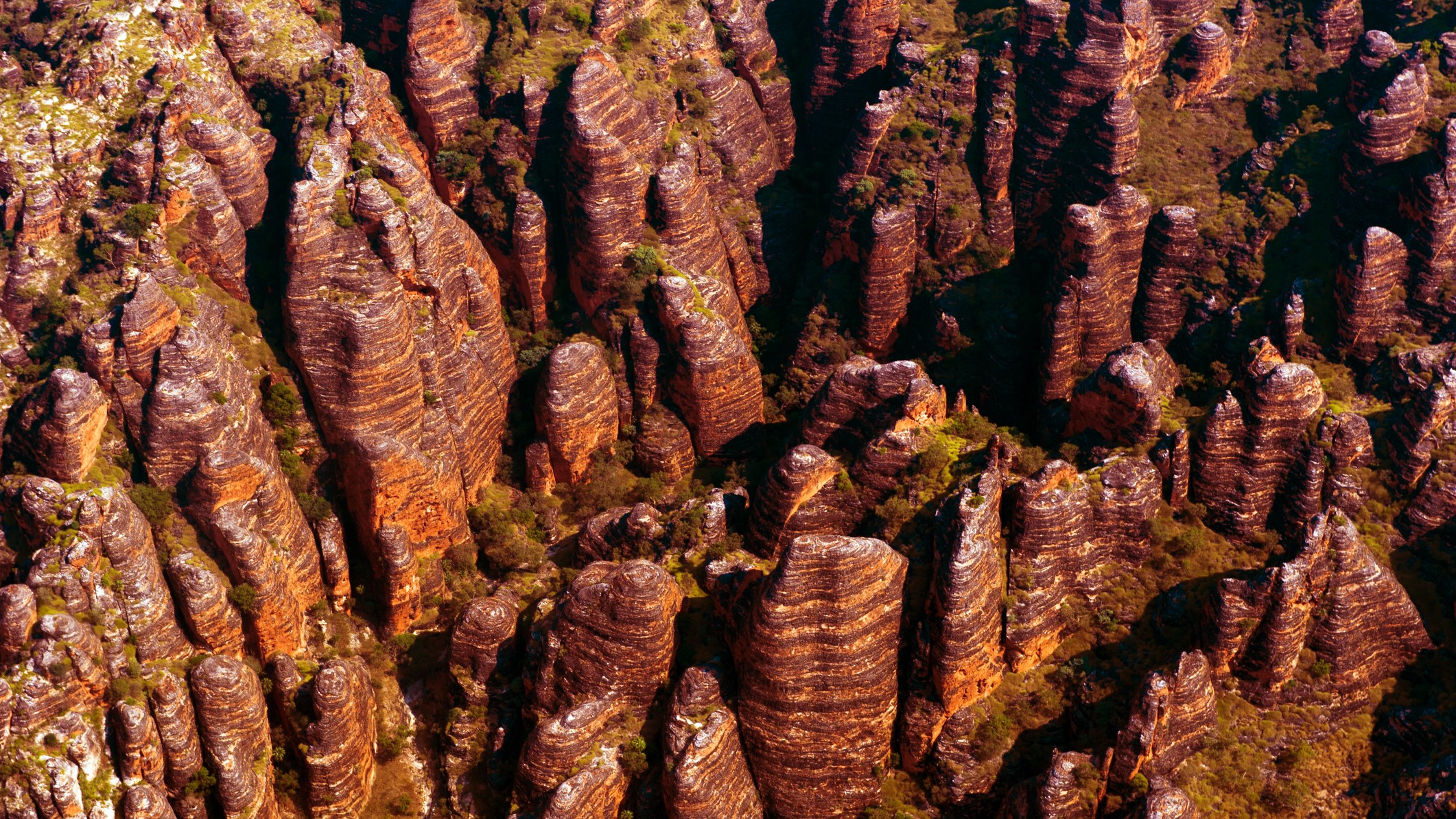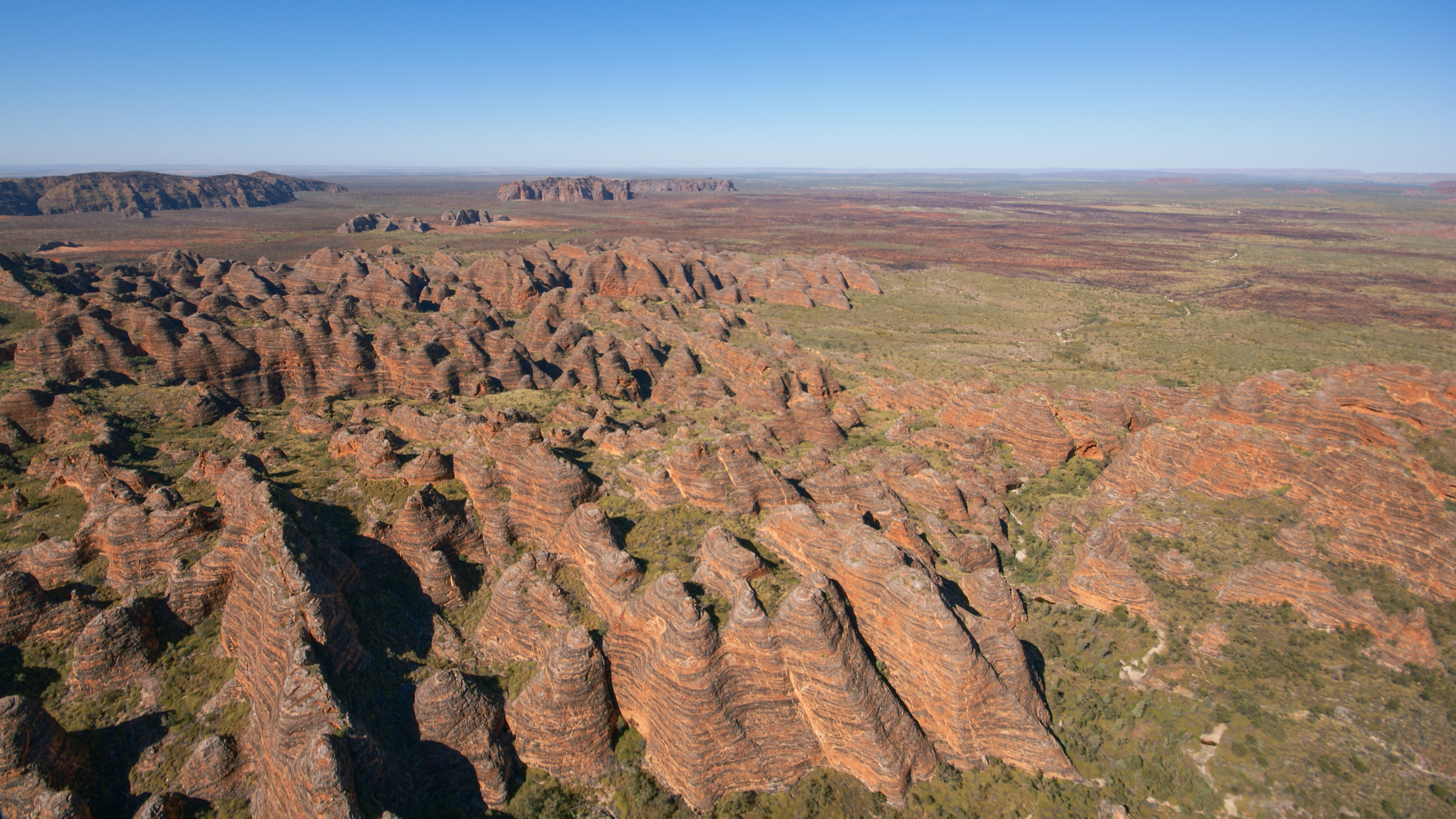The Bungle Bungles: Towering domes in the Australian outback that contain traces of the earliest life-forms on Earth
The Bungle Bungle Range in Western Australia is a collection of rock domes forged from ancient seabeds and flanked to the northeast by a prehistoric meteor impact crater.

Name: Bungle Bungle Range
Location: Purnululu National Park, Western Australia
Coordinates: -17.488979797868172, 128.37026790005643
Why it's incredible: The rock formations contain traces of the earliest life-forms on Earth.
The Bungle Bungles are a collection of sandstone towers with distinctive orange and dark-gray stripes in Western Australia. Although Indigenous people have inhabited the area since time immemorial, the towers only came to the attention of the rest of the world in the 1980s, when filmmakers recorded them while shooting a documentary.
The Bungle Bungles are the main feature of Purnululu National Park, a protected area spanning almost 600,000 acres (240,000 hectares) in the Kimberley region. Due to its areas of "incredible natural beauty" and "outstanding geological value," Purnululu National Park was named a UNESCO World Heritage Site in 2003.
Related: World's largest iron ore deposits formed over 1 billion years ago in supercontinent breakup
The sandstone towers at Purnululu National Park (Purnululu means "sandstone" in the local Indigenous language) are a stunning example of cone karst — landscapes made up of beehive-shaped hills and rocky ground connected to form an area structured like an egg box.
They rise about 980 feet (300 meters) above the grassy plains that surround the Bungle Bungles and sit around 6 miles (10 kilometers) southwest of the Piccaninny crater, a meteor impact structure that formed less than 360 million years ago, according to NASA's Earth Observatory.

The sandstone itself was deposited roughly 360 million years ago and eroded through the joint action of wind and water over the past 20 million years to form the relief we see today, according to Western Australia's Department of Biodiversity, Conservation and Attractions (DBCA).
The orange and dark-gray stripes are evidence of the Bungle Bungles' ancient oceanic origins, with each band resulting from a layer of historic seabed. The alternating colors are caused by the presence of either ancient microscopic algae (gray) in moister layers or oxidized iron compounds (orange) in dry layers of rock. In the orange layers, the rock dried out too quickly for the microscopic algae — also known as cyanobacteria, the earliest known form of life on Earth — to grow, according to the DBCA.
Get the world’s most fascinating discoveries delivered straight to your inbox.
The Bungle Bungles are accessible to the public, with several hiking routes available through the gorges between the striped sandstone domes. The landmark is home to 130 bird species and myriad other native animals, including nail-tail wallabies (Onychogalea) and short-eared rock wallabies (Petrogale brachyotis).
Discover more incredible places, where we highlight the fantastic history and science behind some of the most dramatic landscapes on Earth.

Sascha is a U.K.-based staff writer at Live Science. She holds a bachelor’s degree in biology from the University of Southampton in England and a master’s degree in science communication from Imperial College London. Her work has appeared in The Guardian and the health website Zoe. Besides writing, she enjoys playing tennis, bread-making and browsing second-hand shops for hidden gems.


